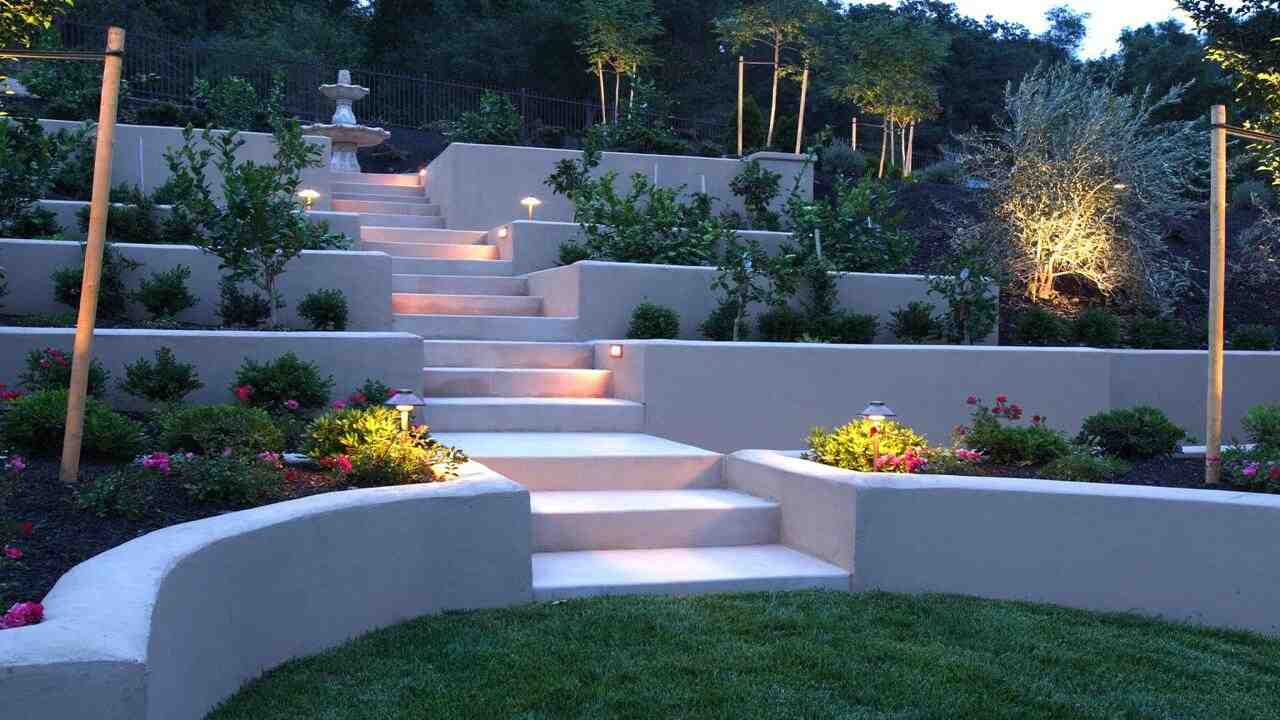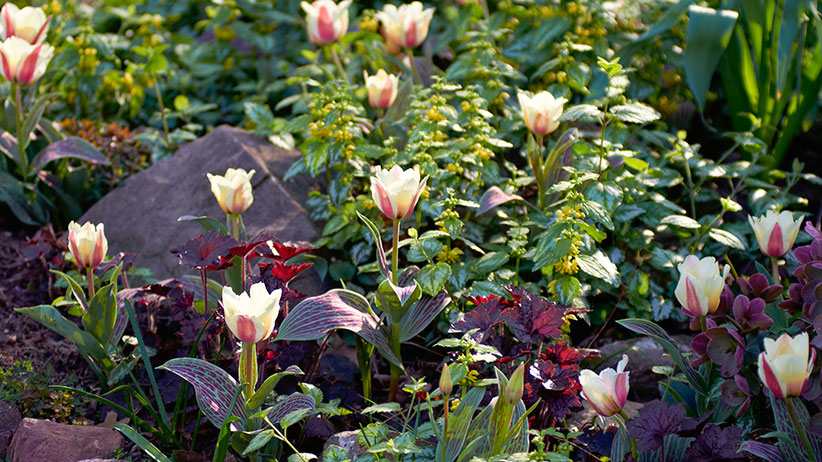If you’re looking to spruce up your hardscape design in Liberty Township, incorporating native plants is a fantastic idea. Not only do native plants add natural beauty, but they also support local ecosystems and require less maintenance.One great place to start is Liberty Heritage Nursery Farm, where you can find a variety of native plants suited to the area’s climate and soil conditions. By blending these native plants into your hardscape design, you’ll create a harmonious and sustainable landscape that thrives with minimal effort. Let’s dive into some creative ways to integrate native plants seamlessly into your outdoor space!
Why Choose Native Plants?
Before diving into the specifics of incorporating native plants into your hardscape design, let’s understand why they are a preferred choice for landscaping projects:
Adaptability:
Native plants have evolved over time to thrive in their specific environments. They are well-adapted to local soil conditions, climate, and water availability, making them more resilient and less reliant on artificial inputs like fertilizers and pesticides.
Water Conservation:
Many native plants have deep root systems that help prevent soil erosion and improve water infiltration. They require less watering once established, making them ideal for water-efficient landscaping, especially in regions prone to droughts like Liberty Township.
Wildlife Support:
Native plants provide food, shelter, and habitat for local wildlife, including birds, butterflies, and pollinators. By incorporating native species into your landscape, you contribute to biodiversity and support the health of the ecosystem.
Low Maintenance:
For low maintenance landscaping in Liberty Township, hardscaping services offer solutions like durable pavers, artificial turf, and automated irrigation systems. These features reduce the need for constant upkeep while maintaining aesthetic appeal. Hardscaping services also include professional design, installation, and maintenance to ensure longevity and efficiency. Combining native plants with hardscaping elements further minimizes maintenance tasks, creating a sustainable and beautiful outdoor environment.
Aesthetic Appeal:

Aesthetic appeal is enhanced in Liberty Township’s small yards through hardscaping trends like vertical gardens, compact seating areas, and creative use of natural materials. These trends maximize space, create visual interest, and offer functionality, making small yards feel spacious and inviting. Integrating native plants further enhances the beauty and sustainability of these hardscaped spaces.
Edible Landscaping:
Edible landscaping is gaining popularity in Liberty Township, with landscaping services offering options like fruit trees, vegetable gardens, and herb beds integrated into hardscape designs. These services provide expertise in planting, maintenance, and harvesting of edible plants, creating functional and sustainable landscapes that offer fresh produce. Combining native plants with edible landscaping enhances biodiversity and ecological benefits.
Steps to Incorporate Native Plants into Your Hardscape Design
Now that we’ve covered the advantages of native plants, let’s delve into practical steps for integrating them into your Liberty Township hardscape design:
1. Research Native Plant Species
The first step is to research native plant species that are well-suited to Liberty Township’s climate, soil type, and growing conditions. Consider visiting local nurseries like Liberty Heritage Nursery Farm or consulting with landscape professionals who have expertise in native plants.
Here are some native plant species commonly found in the Liberty Township area:
Ohio Goldenrod (Solidago ohioensis):
A perennial plant with golden-yellow flowers that bloom in late summer and fall, attracting pollinators like bees and butterflies.
Black-Eyed Susan (Rudbeckia hirta):
A drought-tolerant wildflower with distinctive yellow-orange petals and a dark center, providing a splash of color in the landscape.
Eastern Redbud (Cercis canadensis):
A small tree known for its pinkish-purple flowers that bloom in early spring, adding ornamental value to garden beds.
Purple Coneflower (Echinacea purpurea):
A perennial herb with purple-pink daisy-like flowers that attract pollinators and add a pop of color to gardens.
Eastern Red Columbine (Aquilegia canadensis):
A native wildflower with red and yellow drooping flowers that attract hummingbirds and butterflies, suitable for woodland gardens.
2. Assess Your Hardscape Design and Site Conditions
Evaluate your existing hardscape design, including patios, walkways, retaining walls, and other features. Consider factors such as sunlight exposure, soil type, drainage patterns, and available space for planting native species. Determine which areas can benefit from incorporating native plants to enhance aesthetics and ecological value.
3. Select Plants for Different Zones
Identify various zones within your hardscape design based on sunlight levels and moisture requirements. Choose native plants that thrive in specific zones to ensure optimal growth and vitality. For example:
Sun-Loving Plants:
Select native species that prefer full sun for areas like open patios, sunny borders, or south-facing slopes. Examples include butterfly milkweed (Asclepias tuberosa) and little bluestem grass (Schizachyrium scoparium).
Shade-Tolerant Plants:
For shaded areas under trees, along north-facing walls, or beneath pergolas, choose native plants adapted to low light conditions. Options may include wild geranium (Geranium maculatum) and woodland phlox (Phlox divaricata).
Moisture-Loving Plants:
If your hardscape design includes areas with consistently moist soil, such as near ponds or rain gardens, opt for native plants that thrive in wet conditions. Consider species like cardinal flower (Lobelia cardinalis) and swamp milkweed (Asclepias incarnata).
4. Plan for Seasonal Interest
Integrate native plants that provide seasonal interest throughout the year, ensuring a dynamic and ever-changing landscape. Include species with diverse bloom times, foliage colors, and seed heads for visual appeal across seasons. For instance:
Spring Bloomers:

Choose native plants that flower in spring, such as Virginia bluebells (Mertensia virginica) and wild columbine (Aquilegia canadensis), to kickstart the growing season with vibrant colors.
Summer Flowering Plants:
Include species like purple coneflower (Echinacea purpurea) and black-eyed Susan (Rudbeckia hirta) for summer blooms that attract pollinators and add energy to your outdoor space.
Fall Foliage:
Incorporate native plants with striking fall foliage, such as sugar maple (Acer saccharum) and native grasses like switchgrass (Panicum virgatum), to create a tapestry of autumn colors.
Winter Interest:
Don’t overlook the beauty of native plants in winter. Choose species like winterberry holly (Ilex verticillata) with bright red berries or ornamental grasses that offer structure and texture even when covered in snow.
5. Create Planting Beds and Borders
Prepare planting beds and borders within your hardscape design to accommodate native plants. Use organic mulch or native plant-friendly materials like gravel to retain soil moisture, suppress weeds, and enhance the aesthetic appeal of your landscape. Consider incorporating curving lines and varying heights to create visual interest and mimic natural plant communities.
6. Implement Sustainable Practices
Implement sustainable practices such as organic fertilizers, mulching, and water-efficient irrigation when incorporating native plants into your hardscape design in Liberty Township. Additionally, hardscaping enhances outdoor entertainment spaces by providing durable and aesthetically pleasing features like patios, fire pits, and seating areas, creating inviting environments for gatherings and leisure activities.
7. Maintain and Monitor
Regular maintenance is essential to ensure the health and longevity of native plants in your hardscape design. Monitor for pests, diseases, and signs of stress, and take proactive measures such as pruning, watering during dry spells, and removing invasive species that may threaten native flora.
8. Educate and Engage
Share your experience and knowledge of native plants with others in the Liberty Township community. Consider hosting workshops, volunteering at local botanical gardens or nature centers, and participating in conservation
FAQs
Why are fl native plants important to landscape designers and your group project?
Florida native plants are crucial to landscape designers and our group project because they are adapted to the local climate, soil, and wildlife, making them more resilient and low-maintenance. By using native plants, we can conserve water, support local ecosystems, and create landscapes that thrive naturally without excessive inputs. Incorporating Florida native plants aligns with sustainable landscaping practices and promotes environmental stewardship.
What are the native plants of Hawaii?
Some native plants of Hawaii include the iconic Hawaiian hibiscus (Hibiscus brackenridgei), ohia lehua (Metrosideros polymorpha), and kukui nut tree (Aleurites moluccanus). These plants have adapted to the unique volcanic soil and tropical climate of the Hawaiian Islands, playing vital roles in the islands’ ecosystems and cultural heritage. However, many native Hawaiian plants are endangered due to habitat loss and invasive species, highlighting the importance of conservation efforts.
Why use California native plants?
Using California native plants is beneficial because they are well-adapted to the state’s climate, soil conditions, and water availability, reducing the need for excessive irrigation and maintenance. They also support local wildlife and pollinators, contribute to biodiversity conservation, and promote a sense of place by showcasing the natural beauty of California’s native flora in landscaping projects.
What is unity in garden design?
Unity in garden design refers to the cohesive and harmonious arrangement of elements that create a sense of completeness and interconnectedness within the landscape. It involves the strategic use of color schemes, plant selections, hardscape materials, and overall layout to achieve visual continuity and balance throughout the garden. Unity ensures that different components work together seamlessly to create a unified and pleasing aesthetic experience for viewers.
What are the benefits of Unity in design?
The benefits of unity in design include creating a cohesive and harmonious visual experience that enhances the overall beauty of the landscape. It promotes a sense of order and balance, reducing visual clutter and creating a tranquil and inviting atmosphere. Additionally, unity in design can help convey a specific theme or mood effectively to viewers.
Conclusion
In conclusion, incorporating native plants into your hardscape design in Liberty Township is a rewarding endeavor that offers numerous benefits for both your landscape and the environment. By choosing native species adapted to the region’s climate and soil conditions, you create a sustainable and resilient outdoor space that requires less water, maintenance, and chemical inputs.By incorporating native plants into your hardscape design, you not only create a beautiful and functional outdoor space but also contribute to the preservation of local ecosystems and the well-being of wildlife. Let your landscape be a testament to the beauty and benefits of native plant gardening in Liberty Township. Happy gardening and sustainable landscaping!
